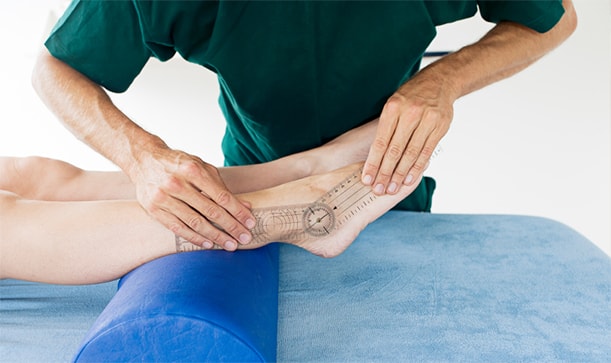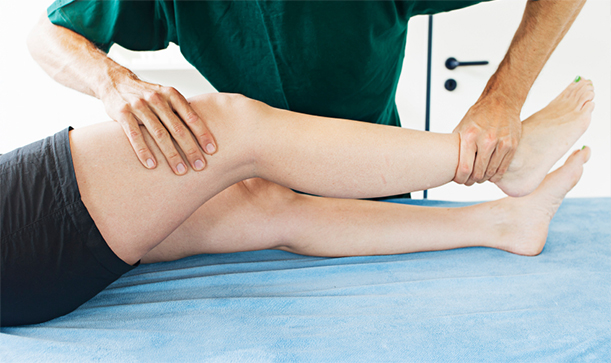CK Physiotherapy
AREAS COVERED
W7, W5, W13, Ealing, West London
57 Elthorne Avenue
Hanwell, W7 2JY
T: 020 8566 4113
M: 079 572 46185
E: info@ckphysio.co.uk
Location / Parking
We are situated in Hanwell, between Boston Manor Road and Northfields Avenue, south of the Uxbridge Road.57 Elthorne Avenue
Hanwell, W7 2JY
There are parking restrictions Mon - Fri 9-10am and 2-3pm. If you need a permit during this time please inform your therapist when you arrive. There are no parking restrictions at other times.
Opening Times
Please phone the number above during working hours to make an appointment. Our reception service will be happy to book your session.
London Underground / Bus Services
London Underground
10 min. walk from Boston Manor Tube Station.
15 min. walk from Northfields Tube Station.
Bus Service
E8, E3, E2, 207, 607, 83
Request Call Back
Our Blog
Sports Massage Therapy: The Benefits for Preventative Injuries
By: BryanKelly (Psst, View author in Google Plus) Date: Dec 26th, 2018Those of you deciding to take up a strenuous sport likely have one worry on your mind: Being seriously injured. Whether it's playing football or being a runner, some kind of injury is nearly inevitable with amateur athletes.
Then again, this doesn't have to happen using the proper therapeutic benefits of massage. Massage therapy has become a standard here in the U.K. and the world to help sports amateurs overcome painful injuries.
What kind of massage services would you find the most beneficial? Take a look at what's available, including what to expect from a qualified physiotherapist.

Typical Role of a Physiotherapist
A certified physiotherapist is sometimes confused with a physical therapist. There really aren't any differences and more a difference of semantics based on where you live.
In Europe, someone who provides physical therapy is known as a physiotherapist. Countries like the United States are more apt to use the physical therapy designation.
No matter the term you prefer, these therapists help sports players like you manage physical injuries. Part of this treatment involves massage to relieve pain in the neck, back or joints in the legs and arms.
The main goal of the physiotherapist is to help improve your lifestyle and avoid taking pain medications. While massage is part of the therapy provided, they also help the patient with exercise programs, manual therapy, and educational advice.
As the Chartered Society of Physiotherapy, physiotherapists provide therapy in four different areas:
• Neurological
• Neuromusculoskeletal
• Cardiovascular
• Respiratory
They also use a "whole person" approach, which involves you taking an active role in keeping your physical health under control.
The Benefits of Massage Therapy for Sports Players
The neuromusculoskeletal side of physiotherapy involves massage techniques that help you keep your body limber and free of pain. One immediate bene t to having massage therapy is it releases muscle tension.
When you experience stress during workouts for sports, various trigger points in your body can bring extreme tension. To help make your body tissue more pliable, massage therapy will give you better mobility and ultimately prevent future injuries from occurring.
This isn't the only benefit of massage therapy. It also improves your posture, something so important if you're doing gymnastics or running. If you spend a lot of time at a desk for your regular job, bad posture in an office chair could weaken your muscles and make you more susceptible to sports injuries.
Repetitive strain injuries are a common problem physiotherapists see in patients. It's why it's so important to keep your posture as straight as possible.
Reducing pain and assisting with pain recovery are additional goals of physiotherapy. Delayed Onset Muscle Soreness (or DOMS) has become a big problem with sports players. Massage therapy rids toxins that build up in your body while exercising, plus improving circulation.
What to Expect From Your Therapist
Those of you convinced to go to a physiotherapist should know what to expect when first visiting them. Since many of them work in different specialities of healthcare, you should decide which area you want to focus on.
For instance, some work in social care, or just as educators and researchers. Perhaps you'd rather have an educational consultant on how to handle your muscle pain. Don't miss out on those who provide massage therapy services, though. You won't regret being able to enjoy the benefits of therapeutic massage.
When you first meet with your physiotherapist, they'll do a few critical things:
• They'll do a physical examination to determine your pain sources.
• Look through any documentation you bring determining your lifestyle and the type of pains you're enduring.
• Ask you to perform exercises or movements to better determine your injuries. Part of this may involve studying your gait as you walk.
• Testing your reflexes or nerves to better determine how your pain affects your body.
Be sure to wear clothing that's easy to remove. You may have to remove clothes so the physiotherapist can examine localised pain areas.
Properly Vetting Your Physiotherapist
Before you visit your therapist, be sure to vet them as much as you can. You can do this by simply asking them questions over the phone while setting an appointment.
Making sure your physiotherapist is qualified is a must since some out there claim to have credentials when they don't. The NHS recommends some specific steps you can take to ensure you get a therapist that's officially certified.
Obtaining a referral from your regular doctor or GP will help you gain access to the best physiotherapists in your local area. Self-referral is also possible if you have general joint pain issues and no other serious conditions.
Always make sure your therapist is registered with the Health and Care Professions Council (HCPC). This is the definitive way to tell if they're professional. Fortunately, the NHS provides physiotherapy for free, so you can be sure to have it paid for if you worry about the expense.
Typical Injuries Treated
Massage therapists treat a litany of sports-related injuries. Pulled muscles are one of the most common of all. Other injuries include Runners Knee, Tennis Elbow, ankle sprains, and tendinitis in the Achilles heel.
These are just a short list of injuries those who play sports deal with every year. Yours are perhaps similar, or maybe something unique. A fully licensed physiotherapist will be able to help you manage any type of injury, no matter how different it is from what's commonly diagnosed.
Sports Massage as a Preventative Procedure
Some of you are maybe considering playing a sport soon and worry about possible injuries down the road. If you haven't played sports before or for a while, you're more vulnerable to muscle aches and other physical pains.
Doing massage therapy now will help gear up your muscles and body to handle the wear and tear of repetitive motions. Preventative medicine is already a huge health category throughout Europe. Massage therapy now fits perfectly in the same niche.
Contact us at CK Physio to learn about our own renowned physiotherapy services serving London, Ealing, and Hanwell.
Other articles worth reading:
The Most Practical Tips from a Physio for Avoiding Sports Injuries
Common Sports Injuries That Can Be Treated with Regular Physiotherapy
How Physio Helps Athletes Get Back on Track Faster
How Physio Heals Rugby Injuries
How Physiotherapy Solves Martial Arts Injury
How Physiotherapy Keeps Players on the Field





